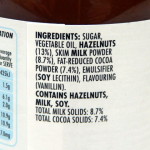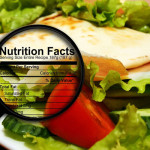New Concerns about ‘Hybrid’ Nutrition Labelling Schemes
In recent years, there have been attempts in some EU member-states, by governments or private businesses, to deter consumers from purchasing certain foods that are high in specific nutrients, including sugar, salt and fat.
Such attempts have come as direct initiatives to prohibit the sale or consumption of some foods in certain contexts (such as in government buildings or school cafeterias), and well as indirect measures intended to lower the perceived nutritional value of some foods.
‘Hybrid’ labelling schemes attempt to classify food as more or less ‘healthy’ by assigning colour indicators – typically red, yellow and green – based on the content of certain ingredients. But concerns have been mounting, at the EU level and in member-states, due to likely violation of EU law that the UK’s ‘traffic light’ labelling scheme represents.
The UK scheme was implemented in June 2013 as a front-of-pack label that includes ‘percentage reference intakes’ and colour coding. This indicates if the product is high (red), medium (amber) or low (green) in fat, saturated fat, sugar and salt. Technically, the scheme is voluntary, but it was recommended by the Food Standards Agency and the Department of Health.
In October 2014, the European Commission (EC) sent a formal letter of notice to the UK government seeking further information, in the light of complaints from food manufacturers that the scheme negatively affects the marketing of certain food products.
The EC indicated that, in some cases, the simplistic character of the ‘traffic light’ scheme might create a negative inference on products labelled with a red light and, to a lesser extent, with an amber light, in a way which shows that such products are of inferior quality. As a result, it could be said that the scheme is ‘negative’ in its ranking of ‘bad’ nutrition contents.
In January 2015, the EC Directorate General of Health and Food Safety stated that the UK had responded, and that the EC was evaluating whether to take further action and open infringement proceedings. Reports in March 2016 indicated that the EC’s review was in progress, but details were not provided.
In France, an industry-backed draft Public Health Act was presented in early 2015 to the EU Council of Ministers. It provided for a ‘4-class’ nutrition labelling scheme coding the recommended frequency of consumption – ‘often’ (green), ‘from time to time’ (blue), ‘in moderation’ (amber) and ‘occasionally, or in small quantities’ (purple).
Some consumers groups advocated a ‘5-class’ system, similar to the UK’s ‘traffic light’ system, in part because the French advisory health body announced that it was in favour of this. However, in April 2016, the French food safety agency (ANSES), said it would not implement either of the schemes because of potential inconsistency with the EU Food Information Regulation (FIR).
Alleged violation of EU law
On March 14, 2016, delegations from Italy, Cyprus, Greece, Portugal, Romania, Slovenia and Spain presented a note arguing that nutrition labelling schemes violate Article 35 of the FIR. They requested that the EC provides an update on the foreseen initiatives of this sensitive issue.
From a legal perspective, as of Dec 13, 2016, Articles 9(1) and 55 of the FIR require nutrition labels on foodstuffs to declare energy value, the amounts of fat, saturates, carbohydrates, sugars, protein and salt.
Article 35(1) of the FIR allows the energy value and the amount of nutrients to be given by other forms of expression and/or presented using graphical forms or symbols in addition to words or numbers. However, this voluntary information must be provided in conjunction with the full mandatory nutrition declaration on the back of the relevant food product.
Importantly, any such additional labelling must be objective, non-discriminatory and must not create obstacles to the free movement of goods, and the expression on nutritional content must be based on scientific research and not mislead consumers.
However, as recognised by ANSES, the compositional data for proposed nutrition labelling is currently not tracked on mandatory nutrition labels; and is impractical to implement with sound scientific basis.
Moreover, ‘hybrid’ nutritional labelling schemes may misled consumers into believing that certain foods, such as nuts, seeds, cheese, oils and oily fish – which are naturally high in fats, but which are safe and healthy to consume in reasonable amounts – instead should not be consumed.
Law review by 2017
At the meeting of the EU Council of Ministers following the presentation of the note, an official of the UK government asserted that the ‘traffic light’ system meets FIR demands. An official of the EC reportedly acknowledged that the FIR allows for different standards to be used, adding that a thorough review of its requirements is due by 2017.
Under the FIR, the EC must submit a report by Dec 13, 2017 to the EU Parliament and the Council on the use of additional forms of expression and presentation, on their effect on the internal market and on the advisability of further harmonisation of those forms of expression and presentation.
To aid in the development of this report, member-states are obliged to provide the EC with information concerning the use of such additional forms of expression or presentation in their markets. On this basis, the EC may choose to accompany its report with proposals to modify the relevant provisions of the FIR.
The upcoming review will provide the palm oil industry an opportunity to work with entities with similar interests, including many Mediterranean EU member-states and food manufacturers, to resist the use of ‘hybrid’ nutrition labelling schemes.
FratiniVergano
European Lawyers










Leave a Reply